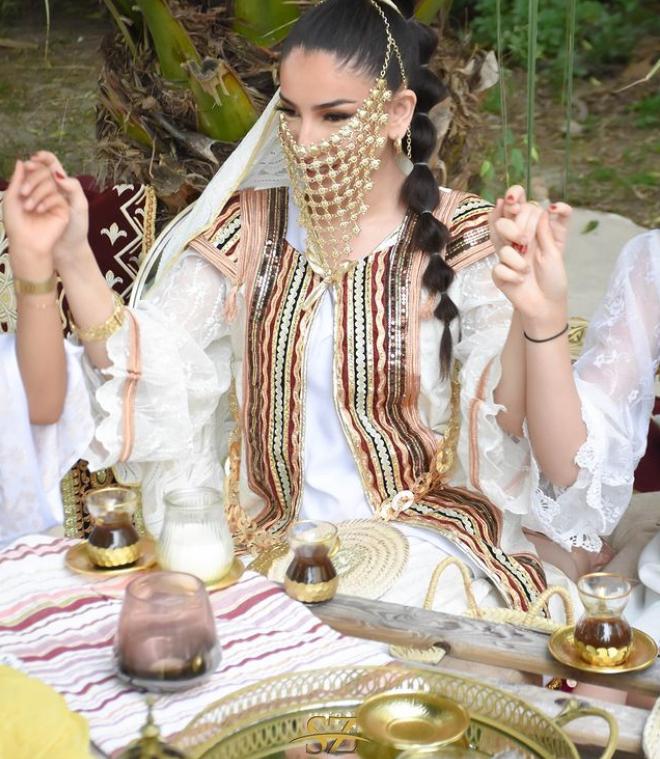Tunisia is a wealthy country culturally because of its strategic position between the eastern world and the occidental world, represented by the European nations located very close to the country. However, some of the country’s cultural traditions have stayed until today, which gives even more charm to this country that offers so much culture and art.
The main tradition that the Tunisians keep and give a rather significant interest in is the tradition of marriage.
The Tunisian marriage is presented according to our ancestors’ traditions that we have previously inherited. The wedding party must be perfect at all levels. The bride and groom’s families must make this event most beautiful and prestigious. Tunisian families opt for a seven-day/seven-night wedding, where all family members are invited to spend seven days and seven nights celebrating. The young bride is showered with gifts during this week of celebration.

Traditions before the wedding day
Each day before the wedding is a significant celebration and has a unique name.
The First day is named “Saboun,” where the bride’s trousseau is prepared between aunts and cousins by packing it in pretty boxes surrounded by a silk ribbon.
What is the “bridal trousseau”?
The wedding trousseau is displayed at the wedding as a symbol of wealth. Historically, the bride’s trousseau consists of lingerie, bedding, and a cosmetic product. Once the trousseau is complete, all the people in the neighborhood are invited to come and admire it.
The second day “Hazzén el Farch” is the continuation of Saboun. We unpack all the trousseau of the bride in her future house and this in front of the family, which helps to arrange it.
Third-day “Hammam”: this day is entirely reserved for the bride. She goes there surrounded by women of her family in an atmosphere of traditional songs. All the women present are dressed in traditional clothes and take care of her. Everything is done to make her shine! From scrubbing with “the glove of Kessa” to a mask with clay and chickpea flour…
Fourth-day “Henna”: The bride will apply the henna paste and rose water on her hands and feet. This is done to bring luck to the bride in her marital life.
Fifth-day “Harkous”: This day is similar to the previous day. The second layer of drawing is applied to the hands and feet of the bride. Then, a complete hair removal session is organized with sugar to allow her to have radiant skin. At the end of the session, a white stone and rose water are passed over the bride’s body to make it soft and silky.
Sixth day “l’outéya”: The future spouses celebrate separately.
The bride celebrates in the presence of women only. It is also known as the “bride’s party.” All the guests and the bride dress in oriental and traditional dresses according to their region of origin.
Seventh-day “Dokhla” is the D-day when both bride and groom gather at a joint party where the whole family, friends, and neighbors are invited. The groom usually wears a traditional Tunisian suit made of silk or another luxurious fabric. The bride also dresses traditionally in a dress that can vary depending on the region. According to Tunisian tradition, the bride and groom must be seated at the beginning of the ceremony. They must be sitting in a seat decorated with white silk.
Several hundred guests enjoy a hearty meal. To finish, the groom offers his wife a bouquet as a sign of fertility and all the other gifts she receives from the family-in-law, friends, neighbors, and family. They then party all night to Tunisian music.
Nourada CHAFFAI


Leave a comment